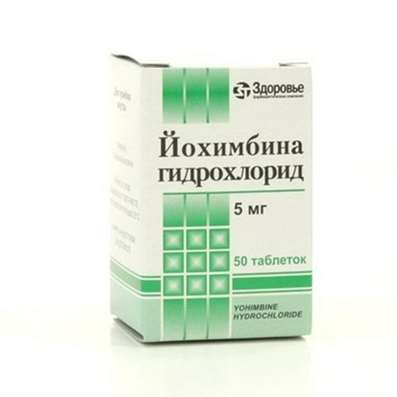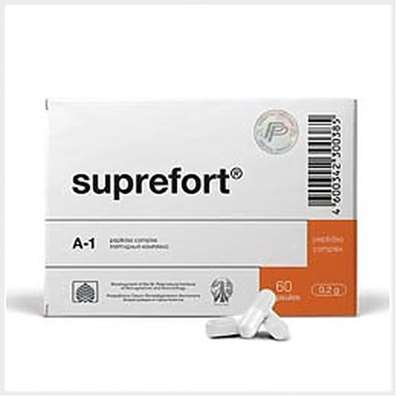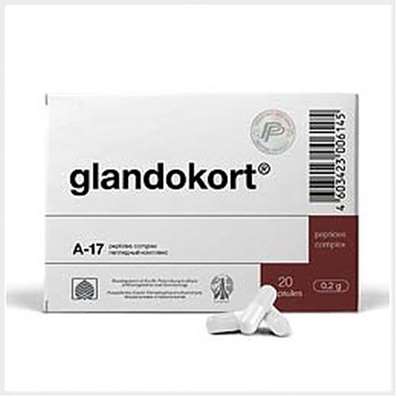Instruction for use: Haemoctin
I want this, give me price
Dosage form: Lyophilizate for the preparation of a solution for intravenous administration
Active substance: Coagulation factor VIII
ATX
B02BD02 Coagulation factor VIII
Pharmacological group
Coagulants (including coagulation factors), hemostatics
The nosological classification (ICD-10)
D66 Hereditary factor VIII deficiency: Congenital insufficiency of factor VIII; Hemophilia; Hemophilia A; Hemophilia classical; Deficiency of antihemophilic factor of blood VIII; Deficiency of the coagulation factor VIII; Inhibitory form of hemophilia A; Bleeding at hemophilia A; Hereditary hemophilia; Hereditary anomalies of antihemophilic factor VIII; Failure factor VIII; Insufficiency of coagulation factor VIII; Acquired hemophilia; Coagulopathies are hereditary
D68.4 Acquired Coagulation Factor Deficiency: Acquired Factor IX deficiency; Hypoprothrombinemia; Deficiency of antihemophilic factor of blood VIII; Coagulopathies acquired; Acquired factor IX deficiency
D68.8 Other specified disorders of coagulation: Afibrinogenemia; Coagulopathies are hereditary
Composition and release form
Lyophilizate for the preparation of a solution for intravenous administration 1 vial.
Ingredients: Hemoctin 250 IU Hemoctin 500 IU Hemoctin 1000 IU
Active substance: Factor of blood coagulation VIII of man 250 IU (50 IU / ml *) 500 IU (50 IU / ml *) 1000 IU (100 IU / ml *)
Excipients: Sodium citrate, calcium chloride, sodium chloride, glycine
In bottles, complete with a solvent (sterile water for injection in vials of 5 or 10 ml), as well as with a disposable syringe, a device for adding a solvent with a built-in filter and a device for venipuncture (needle-butterfly), additionally packed in individual packaging.
Description
Lyophilisate - powder white or white with a yellowish hue
The solvent (sterile water for injection) is a clear, colorless liquid.
The dissolved preparation is a colorless or light yellow, transparent or slightly opalescent solution.
Pharmachologic effect
Mode of action - Hemostatic.
Pharmacodynamics
The molecule of coagulation factor VIII consists of two subunits (factor VIII and von Willebrand factor), which have a different physiological effect.
Factor VIII is responsible for blood coagulation activity: together with factor IX, it accelerates the activation of factor X, activated factor X, in turn, promotes the transition of prothrombin to thrombin necessary for the formation of fibrin from fibrinogen.
In patients with hemophilia A, the activity of factor VIII is significantly reduced, so they need substitution therapy.
The von Willebrand factor is necessary for the adhesion of platelets to the subendothelium of the vessels.
Hemoktin contains von Willebrand factor.
Pharmacokinetics
The activity of coagulation factor VIII after intravenous injection decreases exponentially in two phases.
During the initial phase, there is a distribution between the intra- and extravascular bed with T1 / 2 in plasma 1-8 hours. In the final phase of T1 / 2 is 9-15 hours, an average of 12 hours, which corresponds to the physiological half-life.
The recovery rate for Hemoctin 250, 500 or 1000 IU is about 0.020 ± 0.003 IU / ml / IU / kg. The level of activity of coagulation factor VIII after intravenous injection at a dose of 1 IU / kg increases by approximately 2%.
AUC is about 17 IU / hr.
The average retention time is about 15 hours.
The total clearance of the drug is about 158 ml / h.
Indications of the drug Haemoctin
Prevention and treatment of bleeding in congenital (haemophilia A) and acquired deficiency of the coagulation factor VIII;
Treatment of an inhibitory form of hemophilia A.
Contraindications
Individual intolerance to the components of the drug.
Application of pregnancy and breastfeeding
There were no studies of the effect of the drug on the reproductive function of animals.
During pregnancy and lactation, the drug is prescribed only strictly according to the indications that hemophilia A cases in women are rare and no studies on the use of Gemotin have been performed in this category of patients.
Side effects
Very rarely, hypersensitivity or allergic reactions are observed (which can manifest as angioedema (Quincke's edema), burning sensations in the area of administration, chills, flushing, hives, headaches, rashes, lowering blood pressure, lethargy, nausea, anxiety, tachycardia , Feelings of chest compressions, sensations of mild tingling in the muscles, vomiting, dyspnea), in some cases these symptoms can progress up to the development of anaphylactic reactions (including shock). In rare cases, fever is observed.
In patients with hemophilia A, neutralizing antibodies (inhibitors) can be formed to the coagulation factor VIII, which leads to an inadequate clinical response. In this case, it is recommended that you contact a specialized Hemophilia Center.
Incidence of side effects:
- formation of inhibitors: very rare (<0.01%);
- allergic / anaphylactic reactions: extremely rare (<0.001%) - hives, itching, erythema;
- hemolysis: extremely rare (<0,001%) - anemia.
Interaction
So far, interaction with other drugs has not been established.
Do not mix Heamoctin with other drugs. It is recommended to use only the supplied kit for drug administration, since On the internal surfaces of other sets, adsorption of the coagulation factor VIII can occur.
Dosing and Administration
IV, with a speed of no more than 2-3 ml / min.
The dose of the drug and the duration of substitution therapy depend on the severity of the deficiency of the coagulation factor VIII, the localization and severity of bleeding, and the clinical condition of the patient.
The activity of the drug is expressed in international units (ME), which correspond to the current WHO standard for preparations of factor VIII.
The activity of coagulation factor VIII in plasma is expressed either as a percentage (relative to normal human plasma) or in IU (relative to the international standard for factor VIII in plasma).
One ME of coagulation factor VIII activity is equivalent to the amount of factor VIII in 1 ml of normal human plasma.
Calculation of the required dose is based on empirical design data (1 ME of blood coagulation factor VIII / kg increases the activity of this factor in blood plasma by 1-2% of normal activity) and is carried out according to the formula:
Required dose (ME) = body weight (kg) × desired level of factor increase (%) × 0.5
When choosing the dose and frequency of the drug should always focus on clinical effectiveness in each individual case.
In the event of bleeding, the activity of coagulation factor VIII should not fall below a certain level of plasma activity (as a percentage of normal content) in the relevant period.
The data in Table 1 can be used to calculate the dose of the drug for various bleeding and surgical interventions.
Table 1
| Severity of bleeding / type of surgery | The required level of coagulation factor VIII,% | Frequency of administration and duration of therapy |
| Bleeding | ||
| Early hemarthrosis, intramuscular bleeding, bleeding in the oral cavity | 20–40 | Repeat every 12-24 hours, not less than 1 day, until pain or healing is relieved |
| More extensive hemarthrosis, intramuscular bleeding or bruising | 30–60 | Repeat the administration every 12-24 hours for 3-4 days or more until relief and disability recover |
| Hemorrhages that pose a threat to life | 60–100 | Repeat the administration every 8-24 hours until the elimination of the threat of life |
| Surgical interventions | ||
| Small, including the extraction of teeth | 30–60 | Every 12-24 hours, at least 1 day, until healing |
| Extensive | 80–100 (Pre- and postoperative) | Repeat the administration every 8-24 hours, until adequate healing of the wound, then - at least 7 days to maintain the activity of coagulation factor VIII at the level of 30-60% |
During the course of treatment, it is necessary to control the level of coagulation factor VIII for correcting the applied dose and the frequency of repeated administration of the drug. Determination of the activity of the blood coagulation factor VIII in the plasma is mandatory for accurate control of substitution therapy, especially for extensive surgical interventions. Patients can respond individually to the administration of the drug, with a different level of in vivo recovery and a different half-life of the drug.
In the long-term prophylaxis of bleeding in patients with severe hemophilia A, the drug is usually given in a dose of 20-40 IU / kg at intervals of 2-3 days. In some cases, especially in young patients, higher doses may be required or intervals between administrations may be shortened. In cases where the expected level of coagulation factor VIII activity was not achieved in the treatment, or if the bleeding did not stop after the administration of the appropriate dose of the drug, a patient should be screened for the presence of coagulation factor inhibitors VIII. If inhibitors are present in a titer of less than 10 Be / ml, the additional administration of coagulation factor VIII can stop bleeding. In patients with an inhibitor titer above 10 BTU / ml or a high response level, the use of an (activated) concentrate of prothrombin complex or activated clotting factor VII should be considered. Such patients should be directed under the supervision of doctors with experience in the treatment of hemophilia.
Instructions for preparation and introduction of solution
The rules of asepsis should be strictly observed.
Dissolution of lyophilized powder:
1. Before opening, the vials with the solvent and lyophilizate are heated to room temperature and maintained at this temperature (maximum - 35 ° C) during the whole solution preparation time (about 10 minutes). If a water bath is used for heating, make sure that the water does not come into contact with the stopper or the lid of the vial.
2. Remove the protective caps from the aluminum caps of both bottles to access the central part of the rubber plugs.
3. Rubber stoppers are wiped with a napkin impregnated with alcohol.
Picture 1. Appearance of the device for adding a solvent with a built-in filter.
Open the packaging of the device for adding a solvent with a built-in filter (Figure 2).
Picture 2. Opening the packaging of the device for adding a solvent.
4. The bottle with the solvent is placed vertically. Without removing the packaging, the blue part of the device for adding the solvent is placed on a bottle with a solvent (Figure 3).
Picture 3. The technique of installing a device for adding a solvent.
Remove the package, providing access to the transparent part of the device for adding the solvent.
5. The bottle with the solvent and the device for adding the solvent mounted on it is turned upside down, the vial with the lyophilizate is placed vertically, the transparent part of the device for adding the solvent is put on the vial with the lyophilizate (Fig. 4).
Picture 4. The procedure for mixing the solvent with lyophilizate, shows the correct position of the vials relative to each other.
Under the influence of vacuum, the solvent enters a vial of lyophilizate.
Immediately, as soon as the entire volume of the solvent has moved to the vial with lyophilizate, twist the blue part of the device to add the solvent together with the solvent flask (Picture 5).
Picture 5. Removing the device to add the solvent.
Gently shake the vial with the prepared solution until the lyophilizate is completely dissolved. Do not shake the bottle strongly to avoid foaming. The prepared solution should be clear or slightly opalescent. The solution prepared for use should be used immediately after preparation. A muddy or viscous solution containing a solution is prohibited.
6. After dissolving the lyophilizate, attach the supplied disposable syringe to the transparent part of the device for adding the solvent (Fig. 6), and the prepared solution is drawn into the syringe.
Picture 6. The intake of the solution in the syringe.
A separate filter is not required; The device for adding a solvent has a built-in filter.
7. Carefully disconnect from the syringe the transparent part of the device for adding the solvent together with the vial and slowly inject the prepared solution with iv using the attached device for venipuncture (butterfly needle). The rate of administration should be 2-3 ml / min.
8. After using the butterfly needle to avoid injury, it is closed with a protective cap.
Overdose
No cases of overdose have been reported.
Precautionary measures
Hemomectin contains only known and physiologically harmless components. This means that the drug does not have a harmful effect on normal body functions. Hemomectin contains a maximum of 3.3 mmol of sodium in a standard dose of 2000 IU, which should be taken into account by patients on a diet that limits sodium intake.
In cases of allergic reactions should immediately stop the introduction of the drug and prescribe appropriate therapy.
When using drugs prepared from human plasma, it is impossible to completely eliminate the risk of transmission of known and as yet unknown virus infections. Standard measures to ensure the safety of drugs made from human blood or plasma include the selection of donors, screening of individual donations and plasma pools for markers of infectious diseases and the use of effective technological stages of inactivation / removal of viruses in the production process.
For the production of Hemoctin, only plasma of healthy donors is used, in which no antibodies to HIV types 1 and 2, hepatitis C virus and hepatitis B surface antigen were used. In addition to plasma testing of individual donors, a pool of plasma processed for Hemotin is subjected to control, while again Testing for HIV, hepatitis B and C. In production, a pool of plasma is used only when negative test results are obtained. In addition, the stages of removal and / or inactivation of viruses (treatment with tri-n-butyl phosphate, polysorbate 80, heat treatment) are included in the manufacturing process.
Driving and machinery. The drug does not affect the ability to drive and maintain machinery.
Storage conditions of the drug Haemoctin
In the dark place at a temperature of no higher than 25 ° C (do not freeze).
Keep out of the reach of children.
The shelf life of the drug Haemoctin
2 years.
Do not use beyond the expiration date printed on the package.

 Cart
Cart





